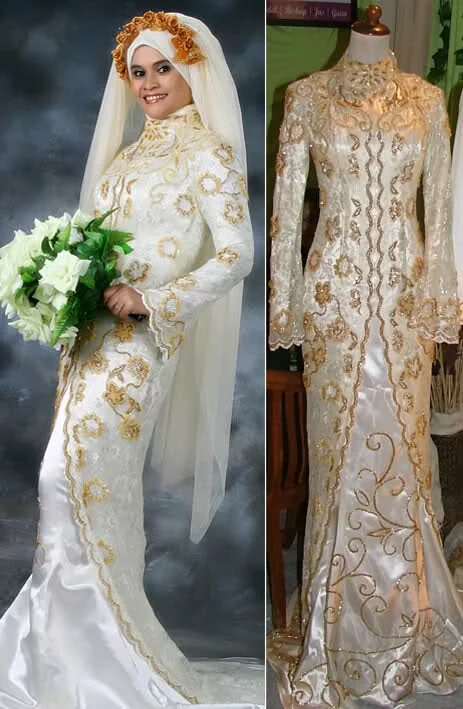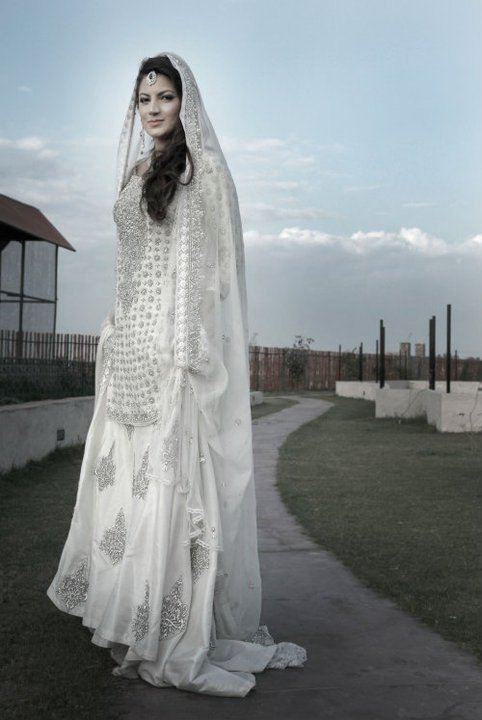Best Wedding Dress Dresses Suits Mehndi Designs Pic Jewellery Mehndi Lehengas 2013
Source:google.com.pk
Wedding Dresses Colours
Pink was another popular colour, considered most suitable for a May wedding. It is flattering to most complexions and associated with girlhood, but some superstitions held it to be unlucky - "Marry in pink and your fortunes will sink"! Mrs Joseph Nollekens (right) was much admired in 1772 in her saque gown of brocaded white silk embroidered with delicate pink flowers. She wore shoes of the same material, with heels of three and a half inches (8cm). The deeper shade of red was definitely taboo by Victorian times, with its reference to scarlet women and hussies.
Amongst the unpopular shades was green. This was considered the fairies' colour, and it was bad luck to call the attention of the little folk to oneself during a time of transition. Also linked with the lushness of verdent foliage, it was held to make rain spoil the big day.
Harking back to the days of homespun garments, any natural shade of brown or beige was considered very rustic. "Marry in brown you will live out of town" with the implication that you will be a hick and never make good in the city.
The bright shade of yellow has had varied popularity. In the eighteenth century it was THE trendy colour for a while, and many wore it, like this bride of around 1774 (left) whose dress is at the Gallery of English Costume in Manchester, but before that time it had been associated with heathens and non Christians and was considered an unholy shade to wear in church!
For brides of the lower classes, an extremely common shade of wedding gown was grey, because it was such a useful colour to re-use as Sunday best, being considered eminently respectable. Mary Brownfield (right) chose grey twilled silk as suitable, as a maiden lady of 32 years at the time of her marriage in 1842. In Victorian times it became associated with girls in domestic service, as they would often be provided with a new grey dress each year by their employer. Its deeper shade of black was of course banned, with its permanent association with death and mourning. In fact it was considered such a bad omen that in some places even the guests were not allowed to wear it, and a recent widow would change her mourning for a red gown for the day, in deference to the bride. This in turn deepened the antipathy towards red, which was viewed as bridal mourning.
Those forced by economics into wearing a dress that would soon become regular daily wear, would adorn it for the day with temporary decorations. Up until the nineteenth century ribbons would be tied into bows, or "love knots" and loosely attached to the dress. These "bride laces" would be pulled off by the guests during the post ceremony festivities, and kept as wedding favours, or souvenirs. This custom gradually died out, being replaced by flowers instead. Guests would be given floral button-holes to wear, and the bride might wear flowers in her hair; as a corsage; or garlanded round her skirts, or else carry them in a bouquet. Rosemary and myrtle were early favourites, and orange blossom became popular in the 1830s. This custom has, of course, remained to this day - most brides, no matter how simply dressed, will have a flower or two somewhere on their outfit! When Charlotte Pennell (left) married George Hill in 1910, she was nearing 40, and had no intention of wearing a "once only" dress. She did however, decorate her fashionable ensemble with a posy of flowers in her hat and a matching bouquet
The "traditional" wedding garb as we know it today first appeared in the late eighteenth century. With the introduction of machine made fabrics and cheap muslins imported from India, and styles inspired by the classical world, by 1800 the white dress with a veil was definitely the one to wear. As usual with fashion, it began in London, spread to other cities and towns and eventually to country areas. Princess Charlotte (right) gave it royal approval at her marriage to Prince Leopold of Saxe-Coburg in 1816. In 1840 Queen Victoria (left) chose white silk and Honiton lace for her own wedding, and made it the virtual rule.The Queen was the first royal bride to have bridesmaids to carry her train too, which also set a fashion.









No comments:
Post a Comment